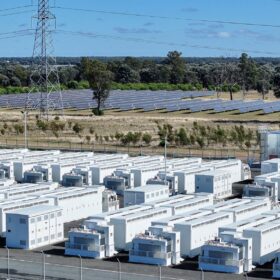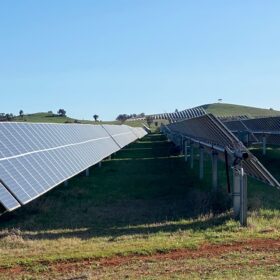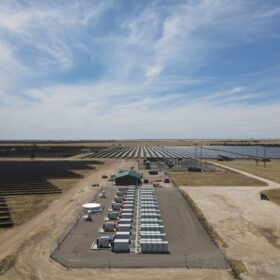Chinese solar module maker Longi has presented this week a new tandem perovskite-silicon solar cell based on an asymmetric self-assembled monolayer (SAM) aimed at reducing passivating defects and increasing efficiency.
SAMs are currently used as state-of-the-art hole transport layers in perovskite-based solar cells, offering low parasitic absorption, rapid charge extraction, and effective passivation of the perovskite’s buried interface. However, controlling their thickness, packing density, and orientation remains highly challenging.
The new tandem device was developed in partnership with China’s Soochow University and was described in the paper “Efficient perovskite/silicon tandem with asymmetric self-assembly molecule,” which was recently published in nature.
“Different from most reported carbazole-based SAMs, which feature a symmetric molecular structure with nitrogen atoms bonded to phosphonic acid anchoring groups, we constructed an asymmetric carbazole-based SAM that incorporates spacers and anchoring phosphonic acid groups flanking the phenyl ring of the carbazole core, serving as a hole-selective layer in perovskite-silicon solar cells,” a spokesperson from Longi told pv magazine.
Dubbed HTL201, the new SAM reportedly improves coverage and uniformity on textured silicon substrates while optimizing interfacial energy level alignment. “Simultaneously, the strong coordination interaction between HTL201 and the perovskite film effectively reduces non-radiative recombination at the buried interface,” the spokesperson added.
The SAM was designed with a vertical configuration that purportedly offers optimal interaction with the transparent conductive oxide (TCO) recombination layer, which in turn improves the coverage on the TCO substrate. Furthermore, the energy level alignment between HTL201 and the perovskite absorber was found to improve hole extraction while reducing interfacial non-radiative recombination.
The research team built the top perovskite cell with a silver (Ag) metal contact, a thin lithium fluoride (LiF) layer and short-chain ethylenediammonium diiodide (EDAI) molecules. Furthermore, it used an electron transport layer (ETL) made of thermally evaporated buckminsterfullerene (C60), a tin oxide (SnO2) layer, a transparent back contact made of indium zinc oxide (IZO), a perovskite absorber, and the proposed SAM.
As for the bottom device, Longi said it was a double-side-textured heterojunction silicon cell, without providing further details or specifying if it utilized the 27.3%-efficient heterojunction back contact (BC) solar cell it recently presented in another scientific paper published in nature – “Silicon heterojunction back-contact solar cells by laser patterning.”
Tested under standard illumination conditions, a tandem solar cell built with this configuration and an area of 1 cm2 achieved a power conversion efficiency of 34.58%, an open-circuit voltage of 2.001 V, a short-circuit current density of 20.64 mA/cm2, and a fill factor of 83.79%.
“The effective defect passivation at the buried interface enhances the quasi-Fermi level splitting of the perovskite layer, which led to an impressive open-circuit voltage of 2 V,” the spokesperson explained. “Our research provides critical technical solutions for developing novel SAM materials and further advancing silicon-perovskite tandem efficiency.”
Longi currently holds the world record for the power conversion efficiency of tandem perovskite silicon solar cells with a 34.85%-efficiency device. The previous record was held by Longi itself, which achieved a 34.6% efficiency for a device with the same configuration in September, when the manufacturer published a scientific paper describing in detail the cell design, which was originally unveiled in November 2023.
This content is protected by copyright and may not be reused. If you want to cooperate with us and would like to reuse some of our content, please contact: editors@pv-magazine.com.









By submitting this form you agree to pv magazine using your data for the purposes of publishing your comment.
Your personal data will only be disclosed or otherwise transmitted to third parties for the purposes of spam filtering or if this is necessary for technical maintenance of the website. Any other transfer to third parties will not take place unless this is justified on the basis of applicable data protection regulations or if pv magazine is legally obliged to do so.
You may revoke this consent at any time with effect for the future, in which case your personal data will be deleted immediately. Otherwise, your data will be deleted if pv magazine has processed your request or the purpose of data storage is fulfilled.
Further information on data privacy can be found in our Data Protection Policy.